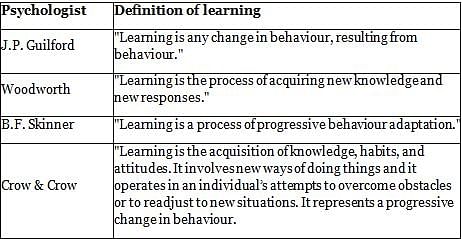MAHA TET Paper 2: Child Development and Pedagogy Test - 5 (Science and Mathematics) - MAHA TET MCQ
30 Questions MCQ Test MAHA TET Mock Test Series 2025 - MAHA TET Paper 2: Child Development and Pedagogy Test - 5 (Science and Mathematics)
By placing students in the least restricted school environment, the school
The main aim of continuous evaluation method is to:
______ exhibits a basic level of order, but the teacher still struggles to maintain it.
Which of the following statements supports the role of environment in the development of a child?
The socially deviant individuals deviate because :
The teacher observed that Ravi is not able to solve a problem alone while he solves it easily when individualized support is provided to him by his teacher. In Vygotsky's view, this kind of support is called:
Scaffolding in the context of learning theories refers to
A student with external Locus of control would attribute his/her failure in the examination to-
During classroom discussions, the teacher pay attention to boys only rather than girls. This is an example of:
While teaching a single parent child, a teacher should
According to Lev Vygotsky, Learning can be categorized under what kind of activity?
Which of the following stages of development is called as 'A unique stage of emotional development' by Cole and Bruce?
In your class, you find that some students cannot understand a topic because of the wide gap in their previous knowledge. What would you do?
Which of the following is the basic unit of any community and society which acts as joining institution between individual and society?
In a class individual learners differ from each other in terms of:
A strategy utilised to protect the ego from anxiety and frustration is called
Which of the following are elements of congenial classroom atmosphere?
A. Creating a conducive atmosphere
B. Engaging in individual efforts
C. Supportive team work
D. Negotiable movement inside the classroom
E. Immersive listening
Choose the correct answer from the options given below:
A teacher wants her students to know about government schemes through primary sources. Which one of the following schemes is inappropriate?
Which of the following is a projective aid?
Which of the following is NOT a strategy for motivating students?
'Learning is any change in behaviour, resulting from behaviour' who said it?
The major purpose of diagnostic test is that of identifying the
To make learning interesting and easier for children with learning disabilities, teachers can use mnemonics to remember complex order of things. For which type of learning disability can this mnemonic strategy be applied?
Which characteristic is a student with Attention Deficit Hyperactive Disorder (ADHD) likely to have?
A classroom teacher would like to know the opinion of class X students on a certain issue. The appropriate method to know the opinion is a/an
Inclusive education is for
I. Minorities students
II. Excluded students
III. General categories students
IV. Disadvantage students
The socialization of a child is determined by which of the following techniques?
Which of the following statements supports the role of environment in the development of a child?
The socially deviant individuals deviate because :
Which of the following are examples of secondary socializing agency?
|
100 tests
|



















